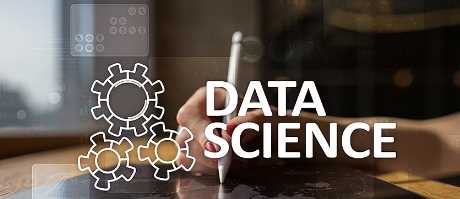In the era of digital transformation and exponential data growth, the field of data science has emerged as a crucial discipline for extracting insights and driving informed decision-making. Data science combines statistical analysis, machine learning, and programming to analyze large and complex datasets. This blog post provides an overview of the key concepts, processes, and skills involved in data science.
Concepts in Data Science:
Data Collection and Preparation:
Data science begins with data collection, where relevant information is gathered from various sources such as databases, APIs, and web scraping. Once collected, the data needs to be cleaned and preprocessed to remove errors, inconsistencies, and missing values, ensuring it is suitable for analysis.
Exploratory Data Analysis (EDA):
EDA involves exploring the dataset to gain an initial understanding of its structure and characteristics. Descriptive statistics, data visualization techniques, and summary metrics are employed to identify patterns, relationships, and potential outliers within the data.
Statistical Analysis:
Statistical methods are used to uncover meaningful insights from the data. Techniques like hypothesis testing, regression analysis, and clustering help to identify correlations, make predictions, and validate assumptions.
Machine Learning:
Machine learning algorithms are utilized to develop models that can make predictions or uncover patterns in the data. Supervised learning, unsupervised learning, and reinforcement learning are common approaches used in data science. These algorithms enable tasks such as classification, regression, clustering, and recommendation systems.
Data Visualization:
Data visualization plays a crucial role in data science. Visual representations such as charts, graphs, and interactive dashboards help communicate complex findings in a meaningful way. Tools like Tableau, Power BI, and Python libraries like Matplotlib and Seaborn aid in creating compelling visualizations.
The Data Science Process:
Problem Formulation:
Defining the problem and understanding the business context is the first step in the data science process. Clear objectives and well-defined questions ensure that the analysis focuses on addressing specific challenges or extracting valuable insights.
Data Acquisition:
Identifying and obtaining relevant data is a critical step. It involves accessing existing datasets, collecting new data, or combining multiple sources to create a comprehensive dataset. Proper data governance and ethics should be followed during this stage.
Data Cleaning and Preprocessing:
Data cleaning involves handling missing values, removing outliers, and addressing inconsistencies to ensure data quality. Preprocessing techniques such as normalization, feature scaling, and dimensionality reduction are applied to prepare the data for analysis.
Exploratory Data Analysis:
EDA helps in understanding the dataset's characteristics, identifying patterns, and detecting anomalies. Visualizations, statistical summaries, and correlation analysis aid in uncovering insights and formulating hypotheses.
Model Development and Evaluation:
In this phase, machine learning models are developed using appropriate algorithms. The models are trained on a subset of the data and evaluated using validation techniques like cross-validation or holdout sets. Model performance metrics are used to assess the accuracy and robustness of the models.
Model Deployment and Monitoring:
Once a satisfactory model is developed, it is deployed for real-world applications. Continuous monitoring and evaluation of the model's performance are necessary to ensure its accuracy and effectiveness over time. Updates and improvements may be made based on feedback and changing data patterns.
Essential Skills for Data Scientists:
Programming Skills:
Proficiency in programming languages like Python or R is essential for data science. These languages provide libraries and frameworks for data manipulation, analysis, and machine learning. SQL knowledge is also valuable for data extraction and database querying.
Statistical Knowledge:
A strong understanding of statistical concepts is crucial for analyzing data and drawing meaningful conclusions. Knowledge of probability theory, hypothesis testing, regression analysis, and experimental design is necessary for effective data science work.
Machine Learning Techniques:
Data scientists should have a good grasp of various machine learning algorithms and techniques. Understanding how to select and apply the right algorithm for a given problem, as well as tuning hyperparameters and evaluating model performance, is key to building accurate and robust models.
Data Visualization:
The ability to create clear and visually appealing data visualizations is important for effectively communicating insights to stakeholders. Knowledge of data visualization tools and techniques, as well as design principles, enhances the impact of data science results.
Domain Knowledge:
Data scientists should have domain-specific knowledge relevant to their area of application. Understanding the context and nuances of the problem domain enables better interpretation of results and helps in formulating meaningful hypotheses.
Conclusion:
Data science is a multidisciplinary field that combines statistics, programming, and machine learning to extract insights from data. By understanding the concepts, following a systematic process, and honing the necessary skills, data scientists can unlock the potential of data to drive informed decision-making and innovation. As the importance of data continues to grow, the demand for skilled data scientists will only increase, making it an exciting and rewarding career path in the digital age.




Leave Comment